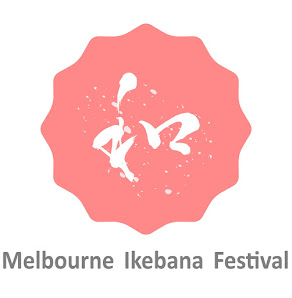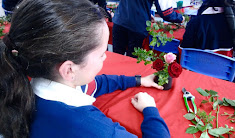Recognising the differences between Ikebana and contemporary art would help us to understand both of them better. For instance, compare my ikebana which I made for Hanabishi Japanese restaurant with Flower by a contemporary artist, Takashi Murakami (Google Flower, Murakami).
Although I don’t know much about Murakami, I can assure you that you can never make any sense of the work no matter how much you look into the image. I have said before that the the most crucial element in contemporary art is meaning. Then, what is the meaning of this work? Perhaps it is in the contexts of history of Japanese painting including ukiyoe and anime, and that of Pop arts in America. Without the knowledge of the art historical contexts, you cannot really appreciate the work.
On the other hand, what you see is everything in Ikebana. Of course, sometimes the knowledge of historical or social contexts is required to interpret an Ikebana work. But Ikebana is not very good at utilising its external contacts. It is sensibility rather than intellect that matters in appreciating Ikebana. In that sense, I think Ikebana is a bit similar to Haiku.
For example, what is the essence of the famous Haiku by Basho, “An old pond — a splashing sound of a frog jumping in”? It must be silence or solitude in nature. The crucial thing is whether you can sympathise with this verse or not. Some may interpret this Haiku philosophically. If you think about unimportant details too much, however, you would miss the essence of the art.
Notably, in both Ikebana and Haiku, the creators have to develop refined skills to produce works that resonate in the heart of the viewers/readers. Artistic skill or craftsmanship is valued. Acquiring such skills involves training. The process is traditionally referred to the way of art and is synonymous with personal development in Japan.
However, as I mentioned, in western art, particularly before Impressionism, skills were not so valued. Flower paintings can be made by anyone if he/she has skill, therefore it is not so valuable. On the other hand, historical paintings require imagination, narratives and inspiration, therefore are more valuable. Such an attitude may still prevail in contemporary art.
In sum, sensibility is important to appreciate Ikebana, while intellect is necessary to appreciate contemporary art.
https://www.facebook.com/ikebanaaustralia








.jpg)
















